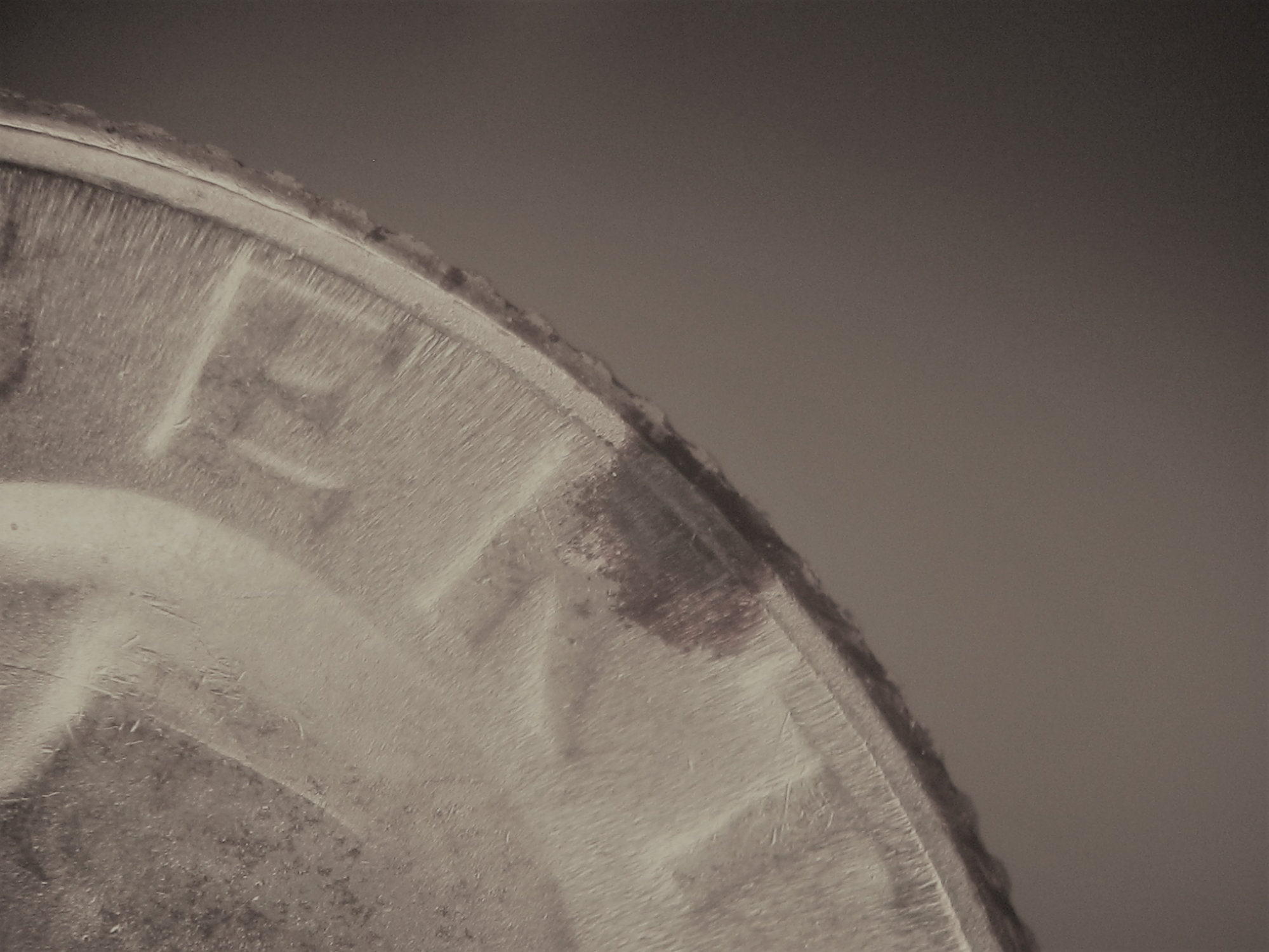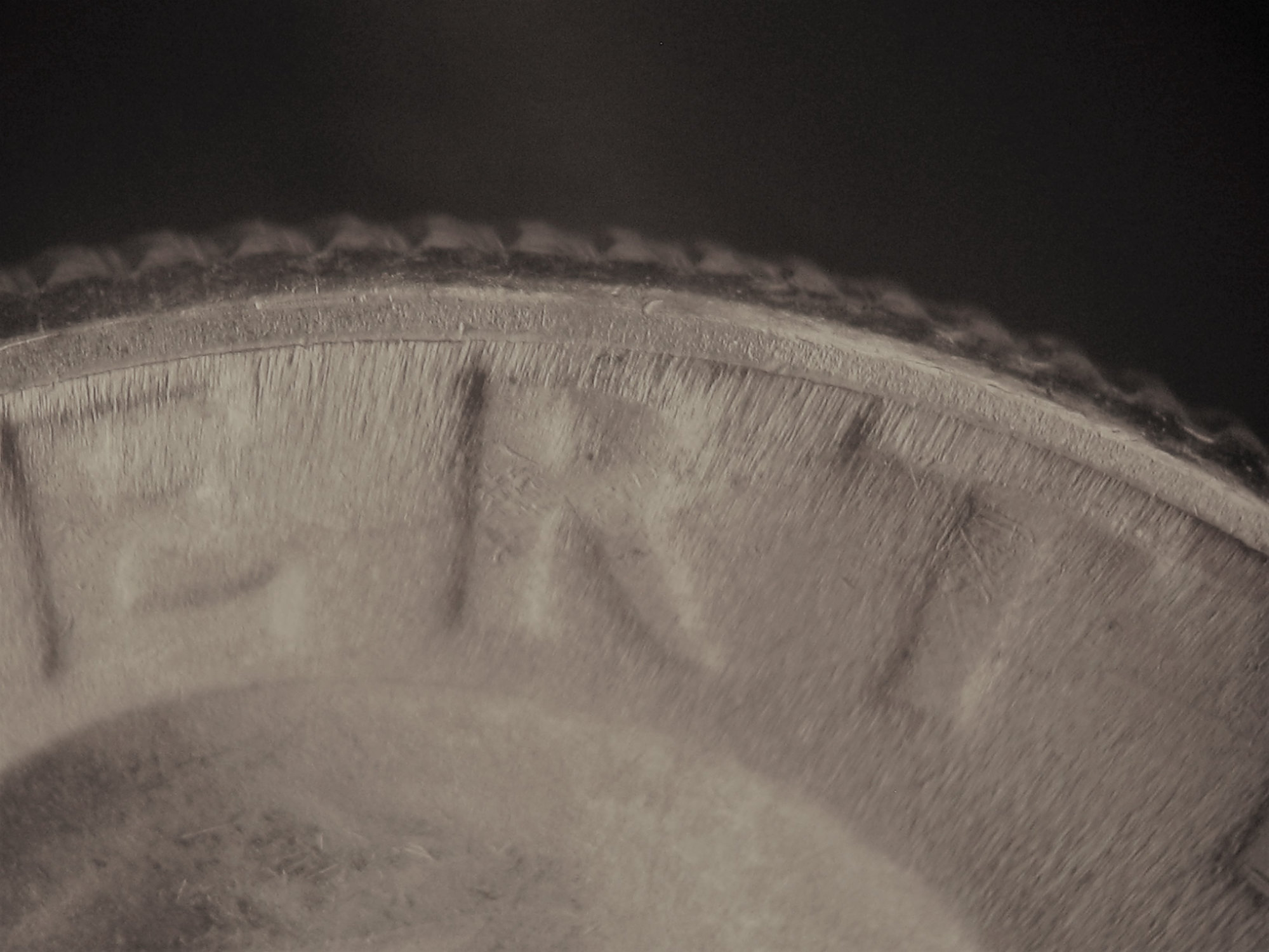Options
Spot Removals
 Insider2
Posts: 14,452 ✭✭✭✭✭
Insider2
Posts: 14,452 ✭✭✭✭✭
When most of my friends think of a "spot removal" they envision a coin that some ham-fisted dunce has scratched-up will trying to remove a detracting defect of some kind.
Here is one a student did in a conservation class this weekend. She get's an "A+"
BEFORE:

AFTER:

PS it took her about ten minutes and five steps after examining it under the scope and choosing a method. The rest of the coin was not affected in any way except it was rinsed in distilled water.
5
Comments
That's impressive
8 Reales Madness Collection
Wow, cudos to the instructor and student. Peace Roy
BST: endeavor1967, synchr, kliao, Outhaul, Donttellthewife, U1Chicago, ajaan, mCarney1173, SurfinHi, MWallace, Sandman70gt, mustanggt, Pittstate03, Lazybones, Walkerguy21D, coinandcurrency242 , thebigeng, Collectorcoins, JimTyler, USMarine6, Elkevvo, Coll3ctor, Yorkshireman, CUKevin, ranshdow, CoinHunter4, bennybravo, Centsearcher, braddick, Windycity, ZoidMeister, mirabela, JJM, RichURich, Bullsitter, jmski52, LukeMarshall, coinsarefun, MichaelDixon, NickPatton, ProfLiz, Twobitcollector,Jesbroken oih82w8, DCW
The area in question doesn’t look like what I’d call a spot. My apologies if I’m being overly particular.
Mark Feld* of Heritage Auctions*Unless otherwise noted, my posts here represent my personal opinions.
Spot+ and the reeding on the edge... and the after looks like almost nothing was there. That is as TwoKopeiki mentioned, impressive!
What was the contaminate and conservation method used?
I agree with Mark, it looks like dark toning. A spot is either a growth or flaw in the alloy
Nice work.
Now would that be possible if there were toning near the area in question ?
And if so could a student do this or would that only be possible if done by the professor ?
@insider2 - Where is this class taught? It sounds like fun. I agree with the others though. Wouldn't a light dip have done the job?
Welcome back to the forum. I look forward to learning lots from your future posts!
Anyone can dip a coin. Many do it properly (several steps I call the "pre-dip stages). Correct conservation is time consuming but not hard. Unfortunately, there are no guarantees concerning the outcome anytime you touch a coin. There may be a short program on conservation at a future FUN show.
I had a key date done and they used laser ablation only in the area that needed to be treated. The rest of the coin was left unharmed and likely dipped in acetone or distilled water. I am very very happy with the results.
Sometimes, it’s better to be LUCKY than good. 🍀 🍺👍
My Full Walker Registry Set (1916-1947):
https://www.ngccoin.com/registry/competitive-sets/16292/